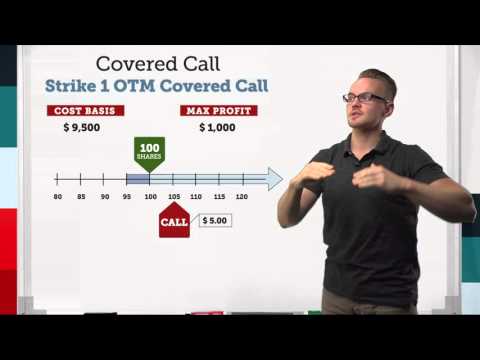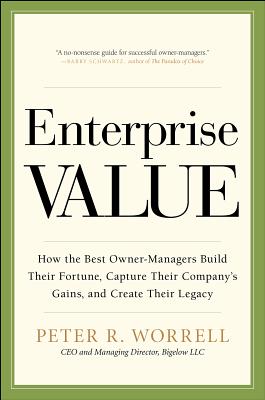Contents
In the context of mutual funds, mark to market is used daily to help provide a better idea of the funds’ Net Asset Value . These contracts are also constantly traded on the open market, so the current market price is a good indicator of their value. As a result, companies must record the current market value of their foreign exchange contracts in their financial statements. His article is about Mark-to-market accounting, also known as fair value accounting.
Mark-to-market losses occur when financial instruments held are valued at the current market value, which is lower than the price paid to acquire them. In securities trading, mark to market involves recording the price or value of a security, portfolio, or account to reflect the current market value rather than book value. In trading and investing, certain securities, such as futures and mutual funds, are also marked to market to show the current market value of these investments. In a sense, mark-to-market accounting is not just used for businessbookkeeping. It’s used by average taxpayers every day when they attempt to figure out their net worth.
Understandably, this type of evaluation can’t provide a fair representation of the subject’s current state. That’s because the information is outdated and irrelevant to the current market environment. Mark to market is a measure of the fair value of accounts that can change over time, such as assets Connectivity V2X and liabilities. If a stock portfolio is used as collateral for a loan, the lender will also want to see regular MTM portfolio values. Margined stock trading accounts effectively provide investors with leverage by lending cash to the investors and using the value of the portfolio as collateral.
How Does it Affect Your Trading?
In other words, an asset experiences a mark-to-market loss if its market price falls from one business day to the next. Initial margin is the percentage of the purchase price of securities that the investor must pay for with his own cash or marginable securities; it is also called the initial margin requirement. For futures contracts, initial margin requirements are set by the exchange. The use of mark to market is to evaluate the collateral margin requirement the trader has to be eligible to trade on credit.
- An example would be to apply higher discount rate to the future cash flows to account for the credit risk above the stated interest rate.
- However, applying it adequately requires the involvement of exchanges or institutional investors, trading OTC.
- Enron’s fall from grace cost thousands of Americans their jobs and shook up Wall Street.
One such example is the case of crude oil futures, where the instrument’s price derives from another commodity). For accounting purposes, mark to market helps present a more transparent representation of the current value of the company’s assets and liabilities, based on today’s market conditions. Mark to Market is also used for the futures contracts that are also termed as important for the investors who had trade commodities with their margin accounts. Let’s first understand how margins work in a futures contract, because it works a little differently than stock margins.
Examples of Mark to Market
On the other hand, the same account will be added to the account of the trader on the other end of the transaction. The market value can be higher than, equal to, or even lower than the net depreciated asset value recorded in the books of accounts. Asset ClassificationAsset classification is a systematic process of assigning the assets to their respective class or group. Such grouping of the assets is done based on the common characteristics possessed by them.
Returning to the same catering company from earlier, say they went to a lender seeking a $5 million loan to open a larger food processing plant to expand into prepackaged frozen meals. A bank could look at the assets of the company and see that they paid $500k to establish their current location. This would be a dangerously inflated number when it comes to determining how much collectible collateral the potential lender has because of the wear and tear on their equipment, which has resulted in a $150k depreciation.
The term mark to market refers to a method under which the fair values of accounts that are subject to periodic fluctuations can be measured, i.e., assets and liabilities. The goal is to provide time to time appraisals of the current financial situation of a company or institution. Available-for-sale AssetAvailable for sale Securities are the company’s debt or equity securities investments that are expected to be sold in the short run and will are not be held to maturity. These are reported on the balance sheet at fair value, and any unrealized gains or losses on these securities are reported in other comprehensive income as a part of shareholders’ equity rather than in the income statement. One of the most common examples of mark-to-market accounting is the valuation of stocks and bonds. These securities are constantly being traded on the open market, so the current market price is a good indicator of their value.

Mark-to-market is a method of valuing positions and determining profit and loss which is used by IB for TWS and statement reporting purposes. Under MTM, positions are valued in the Market Value section of the TWS Account Window based upon the price which they would currently realize in the open market. This helps us understand why mark to market accounting is much more efficient and accurate. The reason is that it reveals the real amount you can exchange assets for today. That’s because it isn’t based on outdated information from a few years back.
If the current market value causes the margin account to fall below its required level, the trader will face a margin call. For example, imagine a company with $100 million worth of stocks, and the market price for those stocks goes down to $80 million. The company would now have to record a $20 million mark-to-market loss on their financial statements.
For example, on day 2, the value of the futures increased by $0.5 ($10.5 – $10). In accounting for individuals, the market value is considered to be equal to the replacement cost for a given asset. For example, the insurance for a homeowner often includes the value of their home in the event that they will need to rebuild their home. The new price is different from the historical cost of the home or the original price paid for the property.
On a more personal level, an insurance company can use the mark to the market approach to evaluate the replacement cost of an insured home or real estate property. If a margin call is necessary, the trader will receive a notice to deposit the necessary funds to cover the shortfall in his or her investment portfolio. For example, an asset purchased at $500,000 will be recorded as having a historical cost of the same amount. Similarly, if the asset value has gone down over time, the company will record “paper losses” when doing the mark to the market. For example, if you do a mark to market real estate, you’ll appraise the value of the real estate property based on its market value as opposed to its purchase value or other evaluations.
Mark to Market Investing
As we’ve mentioned above, one of the primary reasons mark-to-market accounting is needed is that it helps prevent companies from manipulating their financial statements. Mark-to-market accounting in the US is governed by the Financial Accounting Standards Board and the Securities and Exchange Commission . FASB sets high-level standards for financial reporting, while the SEC sets detailed requirements for filings with them.

During the 1990s, Enron used mark to market accounting to exploit an existing loophole and skyrocket its natural gas business profits. Once long-term contracts were signed, the company estimated the income based on the net future cash flow’s present value. However, this resulted in the intentional creation of discrepancies between the cash and the reported profits. In accounting, the mark to market methodology came to replace the historical cost one.
Sample trade to understand MTM
In other words, the nonperformance that must be valued should incorporate the correct discount rate for an ongoing contract. An example would be to apply higher discount rate to the future cash flows to account for the credit risk above the stated interest rate. The Basis for Conclusions section has an extensive explanation of what was intended by the original statement with regards to nonperformance risk (paragraphs C40-C49). In a nutshell, with futures trading, mark to market is to eliminate the credit risk.
Stocks in any trading account or portfolio are also marked to market each day. Profits and losses don’t need to be settled each day like they do with margin instruments, but portfolios and positions do need to be valued each day for reporting purposes. Balance sheets are one of the essential statements used in accounting, and are based on the current value of assets and liabilities. When you know the value of a company’s assets and liabilities you can calculate the equity (assets – liabilities) and decide whether the company is solvent.
Incorporated.Zone is a blog aimed at providing useful information about business, law, marketing, and technology. You will find different types of amazing content such as definitions, guides, reviews, comparisons, and other types of articles intended to provide you the knowledge you need to make decisions. By the way, on this blog, I focus on topics related to starting a business, business contracts, and investing, making money geared to beginners, entrepreneurs, business owners, or anyone eager to learn.
For example, let’s say a catering company needs to determine the valuation of its assets for an annual earnings report. When it was first built, it was valued at $500k , but after a decade, the wear and tear on the equipment has reduced the fair market value of the facility to $350k. In adding up the assets of the company, this depreciation will be https://1investing.in/ factored into the mark-to-market calculations. This can create problems in the following period when the “mark-to-market” is reversed. If the market price has changed between the ending period (12/31/prior year) and the opening market price of the following year (1/1/current year), then there is an accrual variance that must be taken into account.
In cases where performance fees are paid, they are based on the change in the MTM portfolio value over a given period. The Cumulative Gain/Loss column shows the net change in the account since day 1. However, during unfavorable or volatile times, MTM may not accurately represent an asset’s true value in an orderly market. Marge has decided to take some college business courses to help her with a new business venture. This is a new concept for Marge, so she decides to commit to making it to every class and taking good notes.
Benefits of Mark to Market in Futures
By contrast, it’s more difficult to manipulate the closing price of liquid assets like large cap stocks. Historical cost accounting with depreciation is suitable for assets like machinery, vehicles and furniture. When it comes to assets that don’t necessarily depreciate, a valuation estimate from an independent expert or appraiser is more appropriate. Fair value can refer to the agreed price between buyer and seller or the estimated worth of assets and liabilities.